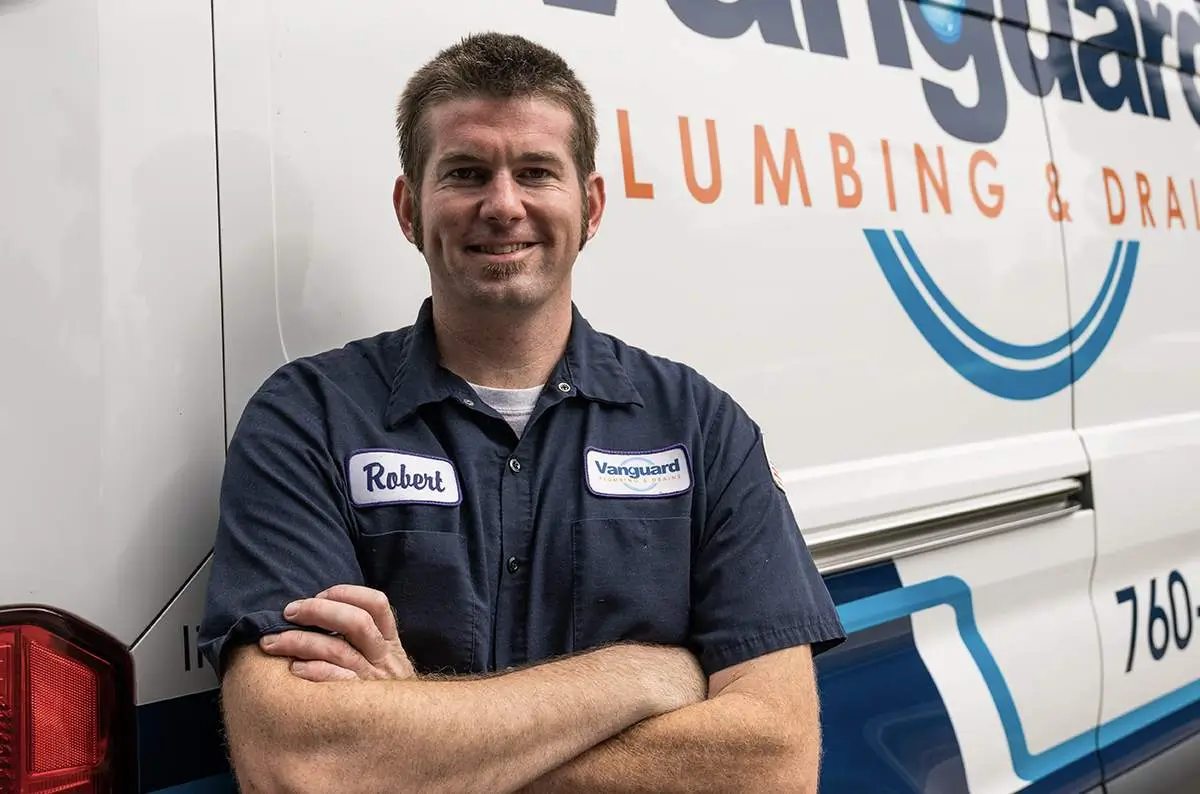
If you want to maximize profits as an electrical contractor, you must properly understand electrical work pricing. This means comprehending blueprints and correctly estimating material and labor expenses in every electrical project. Knowing how to price electrical jobs might be the difference between breaking even and losing money. This guide will equip you with the knowledge to price your electrical work for maximum profit, ensuring your business thrives!
Step 1: Conduct market research
Before you come up with a pricing strategy for your electrical business, you’ll need to do your homework with some market research. You will gain a clear understanding of pricing trends, service needs, and areas for growth in your electrical business by carrying out this basic first step. When conducting market research remember to:
Scope out the competition
Research local electricians’ websites and social media. Look for pricing structures (hourly rates, flat fees for common jobs) and advertised services. This helps you position your offerings and pricing competitively.
Armed with this information, you will gain the confidence to set competitive prices and avoid undercharging. You’ll also get a good understanding of what your competitors are doing so you can adjust accordingly.
Average pricing for common electrical services
The average pricing for common electrical services can be influenced by various factors, including location, home size, project complexity, and the electrician’s skill level. Here is a breakdown of common residential and commercial electrical services and their average pricing:
- Home Inspection: $150 to $350
- Generator Installation: $300 to $6,000
- Electrical Panel Upgrade: $600 to $3,500
- Circuit Breaker Replacement: $100 to $300
- Ceiling Fan Installation: $70 to $400
- Outlet Repair/Replacement: $50 to $300
- Light Switch Installation: $50 to $250
- Rewiring a House: $3,000 to $18,000
- Smart Home Upgrades: $200 to $2,000+
Identify your ideal clients & their needs
Focus on your target area’s demographics (income, age, home type) to tailor services and messaging. Are you targeting young professionals in newly built condos or families in established neighborhoods with older electrical systems? What electrical issues do your ideal customers typically face? Do they prioritize fast fixes or complete rewiring projects? Understanding their needs can help you create personalized service packages catering to their needs.
Step 2: Decide your pricing model
Now it’s time to decide on your pricing structure. There are many to choose from but flat rates and hourly are the most popular. Hourly rates are preferred for residential projects due to their predictability, smaller scope, and client comfort. Hourly billing ensures electricians are fairly compensated for extra time, while flat rates incentivize efficient work, benefiting both parties. For commercial projects, flat rates are more attractive due to their predictability, efficiency, and larger scale.
Flat rate pricing
Flat-rate pricing is a straightforward pricing technique in which a firm or person charges a set amount for a certain service, regardless of how long it takes to complete the task. Flat rate pricing is sometimes known as ‘fixed fee’ or ‘flat fee’ pricing.
- Benefits: Customers appreciate the predictability of a single upfront cost, and this simplifies the decision-making process. It streamlines invoicing for you.
- Drawbacks: Requires pinpoint accuracy in estimating project scope. Underestimation can eat into profits. Unexpected challenges can force you to absorb additional costs.
Time and materials pricing
Time-and-material pricing, or T&M pricing, is a pricing model in which the client is charged for both the cost of materials and an hourly (or daily or weekly) rate for labor. Typically, the client is just invoiced for the time spent on the job, and the cost of materials may or may not be marked up. This pricing model is often utilized when the scope of work is uncertain, or the project is anticipated to undergo significant adjustments.
- Benefits: Perfect for projects with uncertain scopes or evolving needs. It is also transparent for clients as they only pay for actual hours and materials used.
- Drawbacks: Clients might feel apprehensive about open-ended costs. Requires meticulous time tracking and clear communication to manage expectations.
Hourly pricing
Hourly pricing in electrical work provides simplicity and flexibility for both the electrician and the client. It offers a flat fee per hour, allowing for flexibility in unforeseen circumstances. This ensures the electrician’s income while ensuring the client pays only for the work done.
Electrician Average Hourly Rates:
Entry-level electrician:
The average hourly pay for an entry-level electrician is $26.27, with varying pay ranges from $19.23 to $30.77.
Journeyman electrician:
The average hourly pay for a Journeyman electrician is $32.72, with varying pay ranges from $26.68 to $36.54.
Master electrician:
The average hourly pay for a Master electrician is $38.43, with varying pay ranges from $28.61 to $43.27.
It is important to note that advancement in rates at these roles may vary based on skill level, location, and years of experience.
Fixed price
A stipulated-sum pricing model is the most basic agreement between contractors and customers. The contractor must agree to provide specified services for a stipulated or fixed price.
With this pricing model, a stipulated price is agreed upon, so if the actual cost of the work exceeds the agreed price, then the contractor must bear the additional expense. If, on the other hand, the cost of the work is less than the agreed price, the contractor will benefit from the savings. This pricing model is best when the scope and schedule of the project are appropriately defined to allow the contractor to estimate project costs fully.
- Benefits: Ideal for well-defined projects with minimal risk of changes. Provides stability for both you and the client with a locked-in price.
- Drawbacks: Less flexibility – requires upfront commitment to a fixed price. Unforeseen complications can lead to losses if not properly accounted for in the initial estimate.
Choosing the model
The optimal pricing model hinges on what works best for your business. Accurately estimating project scopes underpins flat-rate and stipulated sum pricing. Time and materials pricing requires strong communication and time management skills. By understanding the strengths and weaknesses of each model, you can select the one that best suits your project, expertise, and risk tolerance. Remember, electrical work pricing guides can provide valuable starting points, but your experience and knowledge are the true conductors to maximum profitability.
Step 3: Calculate your labor costs
Labor costs typically represent a significant portion of project expenses. Electrical contractors need to ensure that labor costs are in line with project revenues to achieve profitability. To accurately estimate labor costs you’ll need to consider these factors that directly impact the profitability of electrical projects:
Identify cost components
A comprehensive understanding of all project costs is vital. Break down the following:
- Materials: This includes wires, fixtures, panels, and other electrical components.
- Equipment Rentals: Specialized tools or equipment might be needed for specific jobs.
- Permits: Factor in permit fees associated with the electrical work.
- Subcontractor Fees: If necessary, account for subcontractor costs for tasks outside your expertise.
- Labor hours required for installation: Consider the amount of time required to complete the project.
- Number of electricians needed: Factor in the number of electricians needed for the task.
- Hourly labor rate or piece-rate system for pricing labor: Decide on the desired pricing model for labor, whether hourly labor rate or piece-rate system.
How to calculate hourly labor costs
Hourly Labor Cost = Hourly Wage + Benefits + Additional Labor Expenses
Note that this formula applies to every worker. It’s important to sum up the labor costs for all employees involved in the project to determine the total cost.
Get In Touch: 858-842-5746
Let us earn your trust
See plan options and feature breakdown on our pricing page.
Step 4: Calculate material costs
No two projects are the same. Your material costs can vary significantly from job to job–it just depends on the scope of work for the project. Accurately estimating these costs is necessary for setting a price that covers your expenses and leaves healthy room for profit.
How to estimate your material cost
To estimate material costs, use this formula:
Total Material Cost = (Unit Cost x Quantity) x local sales tax
This calculation ensures you account for all materials needed for a job. Charging too little on material costs will cut into your bottom line.
Materials commonly used in electrical jobs
Using the right tools help to improve efficiency in electrical jobs. These materials also help to improve safety. Some of the materials commonly used in electrical jobs include the following:
- Copper or aluminum wires
- Conduit (e.g. EMT, PVC) for routing wires
- Wire connectors
- Junction boxes
- Main service panel (e.g. 200A, 40-circuit)
- Circuit breakers of various amperages
- Light switches
- Dimmer switches
- Smart switches
- Outlets
- Duplex receptacles
- GFCI outlets
- USB-enabled outlets
Step 5: Factor in operating costs
Overhead costs represent all those essential, but indirect, expenses that keep your electrical business running smoothly. Think rent, utilities, marketing, insurance, and even office supplies. These expenses add up and can silently eat into your profits if not considered. Operating costs can be categorized into two main groups:
- Fixed Costs: These expenses remain relatively constant regardless of your workload. Examples include:
- Rent or mortgage for your office or warehouse space.
- Salaries and benefits for administrative staff.
- Loan payments for equipment or vehicles.
- Insurance premiums (liability, worker’s compensation).
- Utilities for your office or shop.
- Variable Costs: The expenses increase with increased activity level and typically rise with the addition of more jobs. Examples include:
- Cost of electrical materials (wire, conduit, panels, etc.)
- Wages for on-site electricians and helpers (including overtime)
- Fuel costs for service vehicles
- Per-job supplies (tools, PPE, permits)
How to calculate operating costs
Total Operating Costs = Fixed Costs + (Variable Cost per Job x Number of Jobs)
This formula provides a clear view of your expenses, helping you to set prices that cover your services while also generating a healthy profit.
Remember: Failing to account for overhead costs can lead to underpricing your electrical services. Not only does this hurt your bottom line but it can also devalue the expertise you bring to the job. By calculating your overhead costs into your pricing strategy, you ensure sustainable business growth and put your electrical business on the path to maximum profit.
- Accuracy is Key: By accurately calculating your overhead costs, you gain a clearer picture of your true break-even point. This is the minimum amount you need to charge to cover all expenses and start turning a profit.
- Pricing with Confidence: Once you understand your overhead costs, you can confidently set prices that ensure profitability. Simply add your overhead amount to the combined cost of materials and labor to get a minimum viable price. From there, you can factor in your desired profit margin to arrive at a final competitive quote.
Step 6: Set your desired profit margin goals
It’s time to define your target profit margin. Profit Margin is the percentage of revenue remaining after accounting for all your business expenses. It is calculated using this formula:
Profit Margin = ((Total Revenue ÷ Total Revenue) − Total Costs) × 100
Here’s a strategic approach to finding your ideal profit margin:
- Calculate Your Break-Even Point: Determine the minimum revenue required to cover all your operational costs (rent, salaries, materials, etc.) with no profit.
- Factor in Your Business Goals: Considering your growth aspirations and investment plans, decide on an acceptable profit margin above your break-even point.
- Evaluate Market Competition: Research prevailing electrical work pricing in your area. While you don’t want to underprice yourself, extreme deviations from the market might require justification through exceptional service or specialization.
Remember: Your pricing strategy is a living document. Regularly review your financial objectives and profit margin targets, adjusting your pricing model as your business grows and market conditions evolve.
Step 7: Create your electrical estimate
A thorough electrical estimate for your contracting services should cover specific elements to ensure transparency and avoid any confusion with your clients. Here’s what to include:
- Detailed Scope of Work: Clearly define the electrical tasks to be performed, providing a detailed breakdown of the work involved.
- Material Breakdown: Itemize all necessary materials for the project, along with their individual costs for full transparency.
- Labor Costs: Estimate the labor hours required and the corresponding hourly rate for the skilled work involved in the electrical project.
- Overhead Expenses: Factor in a portion of your business overhead costs within the estimate to reflect the true cost of operations.
- Payment Guidelines: Clearly state the payment terms, including deposit requirements and the schedule for subsequent payments. Additionally, outline any legal implications for non-payment.
- Validity Period: Specify the duration for which the estimate remains valid, ensuring that clients understand the timeframe within which the quoted prices apply.
- Credentials and Coverage: Highlight details regarding your licensing and insurance coverage to instill confidence and credibility with your clientele.
Housecall Pro: Your electrical job pricing partner
Pricing electrical jobs can be a tangled web, but it doesn’t have to be. Housecall Pro simplifies the process, enabling you to reclaim your time and focus on what matters most – growing your business. Our estimating software for electrical contractors helps calculate profitable pricing on every job, ensuring you get paid what you’re worth. Let us be your secret weapon for electrical contracting success.






